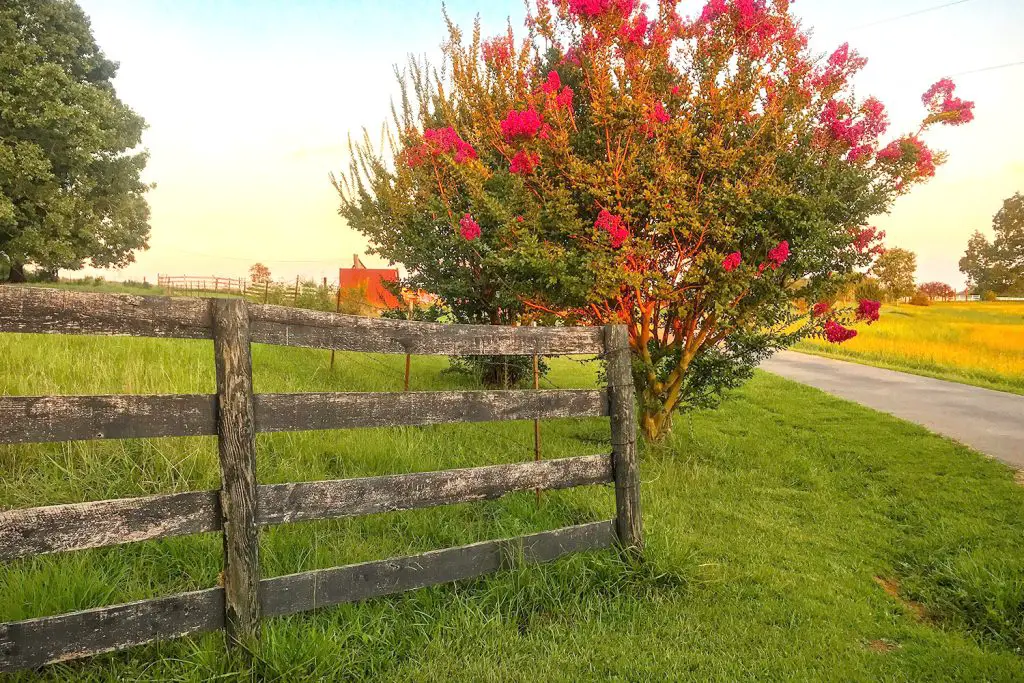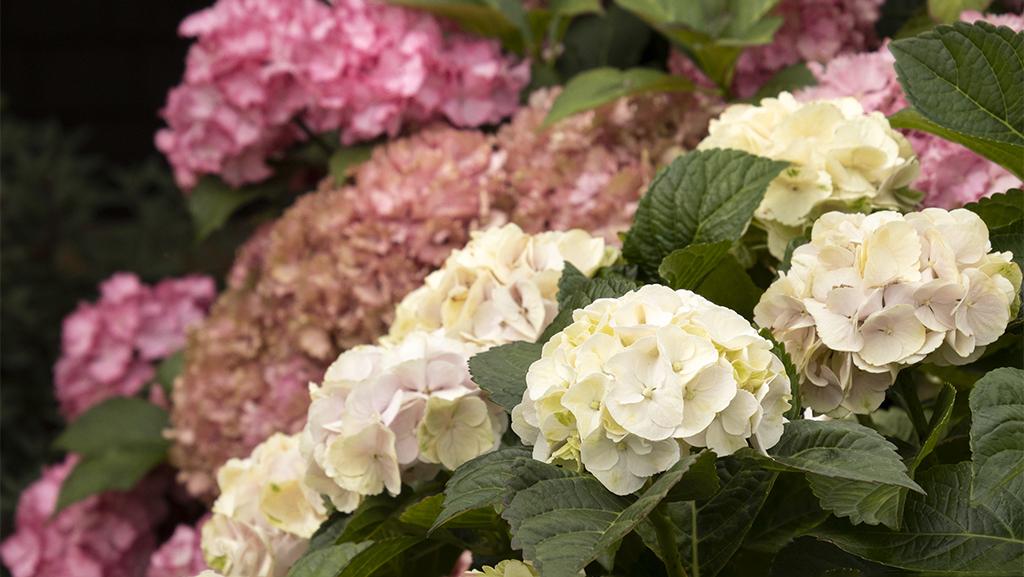
How to Prune Crape Myrtles for Maximum Blooms: Expert Tips
To prune crape myrtles for maximum blooms, cut back branches during late winter. Focus on removing dead or crossing branches.
Crape myrtles are popular for their vibrant blooms and attractive bark. Proper pruning is essential to maintain their health and enhance flower production. Pruning at the right time and in the right way encourages more blooms and a better shape.
Late winter is the ideal period to prune, as it allows the plant to recover and produce abundant flowers in summer. Removing dead, diseased, or crossing branches improves air circulation and light penetration. This practice not only boosts blooming but also prevents diseases. With these pruning techniques, your crape myrtles will thrive and provide stunning floral displays.
Introduction To Crape Myrtles
Crape Myrtles are beloved garden plants known for their vibrant blooms. They are easy to grow and maintain. Pruning them correctly ensures you get the maximum number of flowers.
History And Origin
Crape Myrtles, scientifically named Lagerstroemia, have a rich history. They are native to Southeast Asia, including India and China. They were introduced to the United States in the 18th century.
These plants thrived in the southern regions of the US. Their colorful blooms and peeling bark made them popular quickly.
Popular Varieties
There are many varieties of Crape Myrtles. Here are some popular ones:
- Natchez: White flowers, grows up to 30 feet.
- Muskogee: Lavender blooms, reaches 25 feet.
- Sioux: Bright pink flowers, around 15 feet tall.
- Red Rocket: Deep red blooms, 20 feet in height.
- Tonto: Fuchsia flowers, grows to 10 feet.
Benefits Of Pruning
Pruning Crape Myrtles offers numerous benefits. This practice leads to enhanced blooming and healthier growth. Proper pruning techniques can transform your garden. Let’s explore the key benefits in more detail.
Enhanced Blooming
Pruning encourages more flowers. The plant directs energy to new growth. This results in bigger and more numerous blooms.
- More flower buds form on new branches.
- Blooms last longer and look healthier.
Regular pruning can also shape the tree. This makes it look more attractive. A well-shaped tree blooms more evenly.
Healthier Growth
Pruning removes dead or diseased branches. This keeps the plant healthy. The tree can focus on growing strong, healthy branches.
Check out the table below to see the benefits of healthier growth:
| Action | Benefit |
|---|---|
| Remove Dead Branches | Prevents Disease |
| Thin Out Dense Areas | Improves Air Circulation |
| Cut Back Overgrowth | Encourages New Growth |
A healthier plant is less prone to pests. This means less need for chemical treatments. Your garden stays eco-friendly.
Best Time To Prune
Pruning crape myrtles is essential for achieving maximum blooms. Knowing the best time to prune can make a significant difference in the health and beauty of your crape myrtles. Timing your pruning correctly ensures that your plants will thrive and produce stunning flowers.
Seasonal Guidelines
The best time to prune crape myrtles is during late winter. This period allows the plant to heal before the growing season begins. Pruning in late winter helps to avoid damage from frost and cold temperatures. Follow these guidelines for seasonal pruning:
- Late Winter: Ideal for heavy pruning and shaping.
- Early Spring: Light pruning to remove dead branches.
- Summer: Only minor trimming if necessary.
Climate Considerations
Climate plays a crucial role in determining the best pruning time. In warmer climates, pruning can be done slightly earlier. In colder climates, wait until the risk of frost has passed. Here’s a table to help guide your pruning schedule based on climate:
| Climate | Best Pruning Time |
|---|---|
| Warm Climates | Late January to Early February |
| Cold Climates | Late February to Early March |
Pruning at the right time ensures healthy growth and abundant blooms. Keep these tips in mind and enjoy a beautiful display of crape myrtle flowers.
Necessary Tools
Pruning crape myrtles helps them bloom more beautifully. Using the right tools makes the job easier. Let’s explore the necessary tools for pruning crape myrtles.
Pruning Shears
Pruning shears are essential for cutting small branches. They are also known as hand pruners. Choose a pair with sharp, clean blades. This helps make smooth cuts without damaging the tree.
- Bypass pruners: These are best for live branches.
- Anvil pruners: These work well for dead or dry branches.
Keep the blades sharp for the best results. Dull blades can tear the branches and harm the plant.
Safety Gear
Wearing safety gear is important for protecting yourself. Pruning can be a bit dangerous. Here are some items you should have:
| Item | Purpose |
|---|---|
| Gloves | Protect your hands from cuts and scratches. |
| Goggles | Shield your eyes from flying debris. |
| Long sleeves | Guard your arms against scratches and insect bites. |
These items keep you safe while you work on your crape myrtles. Always check your gear before starting.
Step-by-step Pruning Guide
Pruning crape myrtles can boost their blooms and health. This step-by-step guide will help you prune your crape myrtles correctly. Let’s start with an initial assessment, then move on to removing dead wood, and finally, shaping the tree.
Initial Assessment
Begin by examining the tree closely. Look for any dead or diseased branches. Check the overall structure of the tree. Decide which branches need to be pruned.
Make sure to use clean, sharp pruning shears. This will make clean cuts and prevent damage.
Removing Dead Wood
Identify dead or broken branches. These are usually dry and brittle.
Use your shears to cut these branches back to the main trunk. Remove any branches that cross or rub against each other. This prevents damage and disease.
Tip: Always cut at an angle. This helps water drain off the cut.
Shaping The Tree
Now, shape the tree for a pleasing look. Select 3 to 5 strong main branches. These will form the structure of the tree.
Trim away any smaller branches growing towards the center. This opens up the tree and lets sunlight in.
Important: Never top the tree. Topping damages crape myrtles and reduces blooms.
| Task | Action |
|---|---|
| Initial Assessment | Examine the tree for dead or damaged branches. |
| Removing Dead Wood | Cut back dead branches to the main trunk. |
| Shaping the Tree | Select strong branches and trim smaller ones. |
Follow these steps every year. Your crape myrtles will bloom beautifully!

Credit: www.monrovia.com
Common Mistakes To Avoid
Pruning crape myrtles can be tricky. Many gardeners make common mistakes that can harm the plant. Knowing these mistakes helps your crape myrtles bloom beautifully. Let’s explore the common errors to avoid.
Over-pruning
Over-pruning is a major mistake. It happens when too many branches get cut. This can weaken the plant.
Here are some signs of over-pruning:
- Few leaves left on the tree
- Thin and weak branches
- Slow growth
To avoid over-pruning, follow these tips:
- Only remove dead or diseased branches.
- Leave the main structure of the tree intact.
- Don’t cut more than 20% of the tree’s branches.
Incorrect Cuts
Making incorrect cuts is another common mistake. Improper cuts can harm the tree and reduce blooms.
Here are some examples of incorrect cuts:
| Type of Cut | Description |
|---|---|
| Flush Cuts | Cutting too close to the trunk |
| Stub Cuts | Leaving a long branch stub |
| Ragged Cuts | Using dull tools |
To make proper cuts, consider these steps:
- Use sharp, clean tools.
- Cut just above a bud or branch joint.
- Make smooth and clean cuts.
Post-pruning Care
Pruning crape myrtles is crucial for vibrant blooms. But post-pruning care ensures healthy growth and maximum flowering. Let’s dive into the key aspects of post-pruning care, focusing on Watering and Fertilizing and Monitoring for Pests.
Watering And Fertilizing
Proper watering keeps your crape myrtle hydrated and healthy. After pruning, water the plant deeply once a week. Ensure the soil is moist but not waterlogged. Use a soaker hose or drip irrigation for even watering.
Fertilizing boosts the plant’s growth and bloom production. Apply a balanced, slow-release fertilizer in early spring. Use a 10-10-10 NPK ratio for best results.
Steps for Fertilizing:
- Measure the fertilizer according to the package instructions.
- Spread it evenly around the base of the plant.
- Water the area thoroughly to help absorption.
Monitoring For Pests
Pest control is vital for crape myrtles’ health. Check your plant regularly for signs of pests like aphids and spider mites.
Common Signs of Pest Infestation:
- Discolored or curled leaves
- Sticky residue on leaves or stems
- Visible insects or webs
If you notice pests, use an insecticidal soap or neem oil. Apply it according to the manufacturer’s instructions.
Here’s a simple pest management table:
| Pest | Symptoms | Solution |
|---|---|---|
| Aphids | Sticky residue, curled leaves | Insecticidal soap |
| Spider Mites | Webbing, discolored leaves | Neem oil |
Regular monitoring and quick action keep your crape myrtles healthy and blooming.
Expert Tips For Maximum Blooms
Pruning crape myrtles is essential for beautiful blooms. Expert tips can help maximize these blooms. Learn about timing, technique, and ongoing maintenance.
Timing And Technique
Timing is crucial for pruning crape myrtles. Prune in late winter or early spring. This allows new growth to flourish. Avoid pruning in summer or fall. This can reduce the number of blooms.
Use sharp, clean tools for pruning. This prevents disease and ensures clean cuts. Remove dead or weak branches first. Cut them close to the main trunk. This promotes healthy growth.
Avoid “topping” the trees. This can harm the plant and reduce blooms. Instead, thin out the branches. Focus on shaping the tree and improving air circulation.
Ongoing Maintenance
Regular maintenance is key for maximum blooms. Water the crape myrtles deeply. Do this during dry periods. Use mulch to retain moisture and control weeds.
Fertilize the plants in early spring. Use a balanced fertilizer. This encourages strong growth and more flowers. Follow the instructions on the fertilizer package.
Inspect the trees regularly for pests. Remove any pests you find. This helps keep the trees healthy. Healthy trees produce more blooms.
Pruning crape myrtles properly can be simple. Follow these expert tips for beautiful, abundant blooms.
| Task | Time | Frequency |
|---|---|---|
| Pruning | Late winter/early spring | Once a year |
| Watering | During dry periods | As needed |
| Fertilizing | Early spring | Once a year |
| Pest inspection | Regularly | As needed |
Frequently Asked Questions
How Can I Make My Crepe Myrtle Bloom More?
To make your crepe myrtle bloom more, ensure it gets full sun, proper watering, and balanced fertilizer. Prune in late winter to encourage new growth. Remove suckers and dead branches.
What Month Should Crepe Myrtles Be Cut Back?
Crepe myrtles should be cut back in late winter, typically February. Prune before new growth starts.
Do You Cut Old Blooms Off Crepe Myrtle?
Yes, you should cut old blooms off crepe myrtle. Removing spent flowers encourages new growth and extends blooming season.
Can You Cut Crepe Myrtles All The Way Back?
Yes, you can cut crepe myrtles all the way back. This method, known as “crape murder,” promotes vigorous new growth.
Conclusion
Pruning crape myrtles properly ensures vibrant and abundant blooms. Follow the steps and techniques outlined here. Your efforts will reward you with a stunning display. Happy pruning and enjoy the beauty of your flourishing crape myrtles!

